Marketing automation strategies have become part and parcel of the modern-day business world.
But what are they, how’re they used, and why should your team sit up and take notice?
In this article, we’ll focus on:
- What marketing automation is
- Types of marketing automation
- How marketing automation methods work
What is marketing automation?
Marketing automation allows product marketers to repeat tasks via the activation of automated processes called workflows.
It’s often used by companies to streamline internal processes and improve customer experiences in a bid to reduce customer churn, increase customer retention, and free up invaluable time and resources.
Such are the benefits of marketing automation, that it’s estimated such campaigns can support companies in increasing their open rates by as much as 86%, whilst also improving their click-through rate (CTR) by 196%, prompting growth in company revenue.
Types of marketing automation
There’re a variety of marketing automations you can use to fulfil the requirements of your team.
Onboarding emails
Customer onboarding is a fundamental part of the customer lifecycle. It’s pivotal for businesses to liaise with their clientele effectively, and make them feel valued to deliver a stellar user experience.
Customer relationships sit at the core of every team’s success; it sets the foundation for customer advocacy programs and subsequent referrals for new buyers.
Therefore, welcome emails are incorporated into the marketing automation strategy to create seamless connections with consumers, and to set the groundwork early.
The quicker a customer is catered to, the more valued they’ll feel. Simple.
So, let’s check out how the process works. 👇
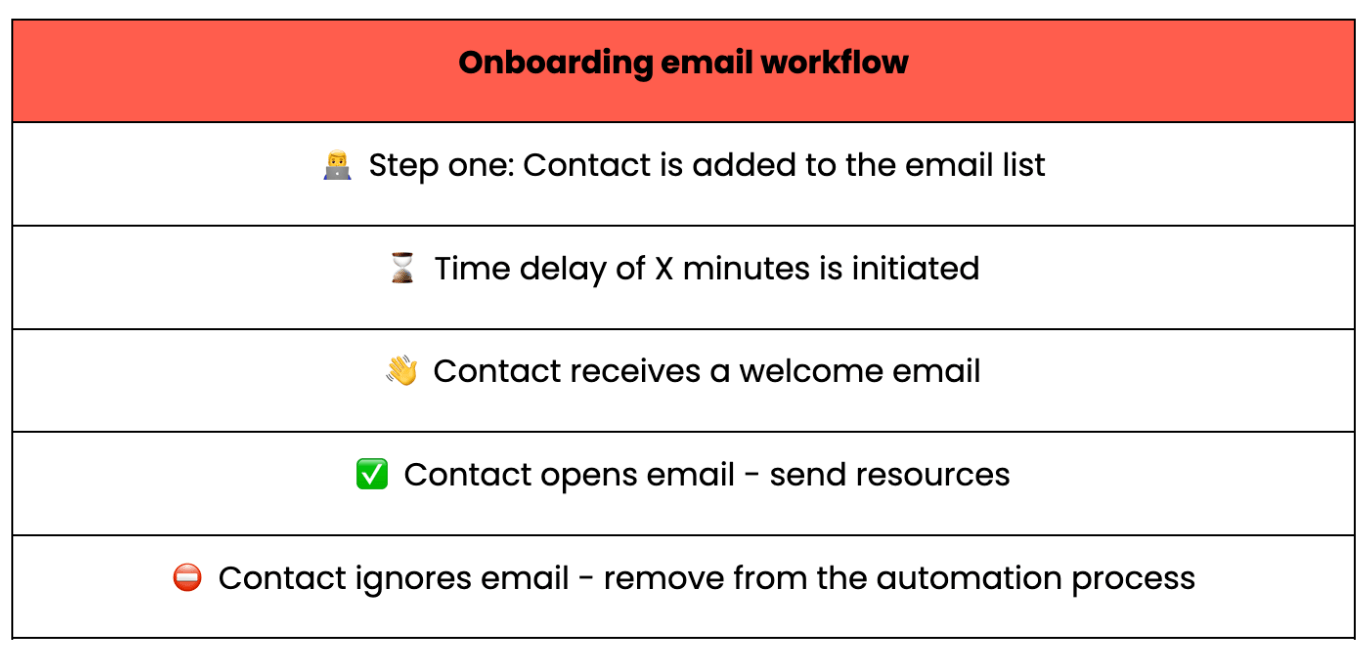
There's an assortment of use cases where marketing automation strategies are used for onboarding purposes. For example, when companies send product and service updates or entice their customer base with incentives to maintain engagement.
Email marketing
Email marketing automation is favored by companies with ambitions of promoting their products to a large-scale customer segment.
Additionally, email marketing is also used by companies that need to provide their customers with vital info about upcoming releases, or updates about existing products and/or services.
Let’s take a look at how this works in practice, using an example of a company sending invitations for an upcoming presentation.
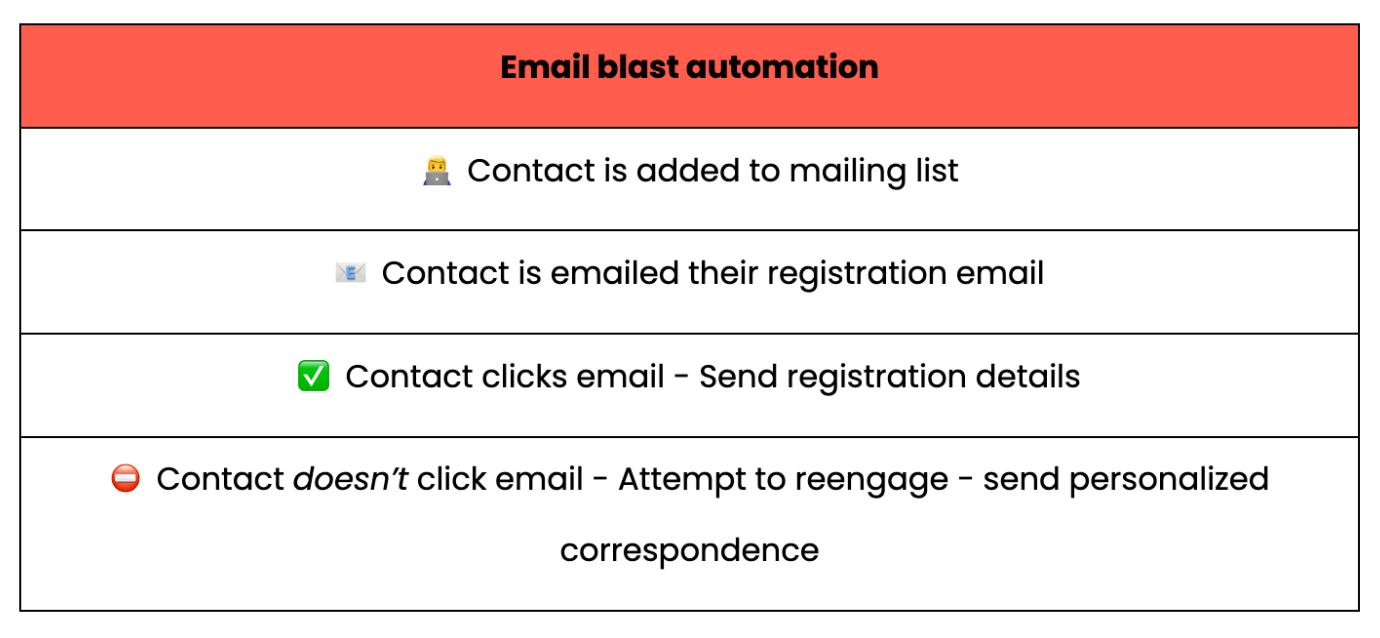
Instances when it’d be considered suitable to use an email blast would be:
- Personalized email campaigns
- Drip marketing
- Segmented marketing
Lead scoring
When using lead scoring, companies assign each customer their respective numerical score which corresponds to the perceived value they bring to the table.
Multiple factors determine the final score that’s assigned to each customer. These include:
- Consumer’s behavior pattern
- Level of brand engagement
- Personal demographic (age, occupation, income)
This process plays a fundamental role in the success of marketing automation strategies. It helps companies to determine which prospects could potentially be the most lucrative to the company.
In turn, this will have a knock-on effect on factors such as product messaging, content strategy, and storytelling, as marketing initiatives will need to be tailored to appeal to that particular audience.
A/B testing email campaigns
A/B testing is used to ensure that the best possible correspondence is being delivered to a data set. Two variations of messages are sent to segmented audiences, and engagement levels are tracked, with the version that performs best utilized across a longer period.
This process allows product marketers to compare different versions of emails to ensure that an email marketing campaign fulfils its intended purpose. For example, teams often send out an email and experiment with two different email subject lines and track open rates.
If there’s a clear ‘winner’ between the two, then this is taken into consideration when planning future emails.
But how does an automated strategy work in the context of A/B testing? 🤷♂️
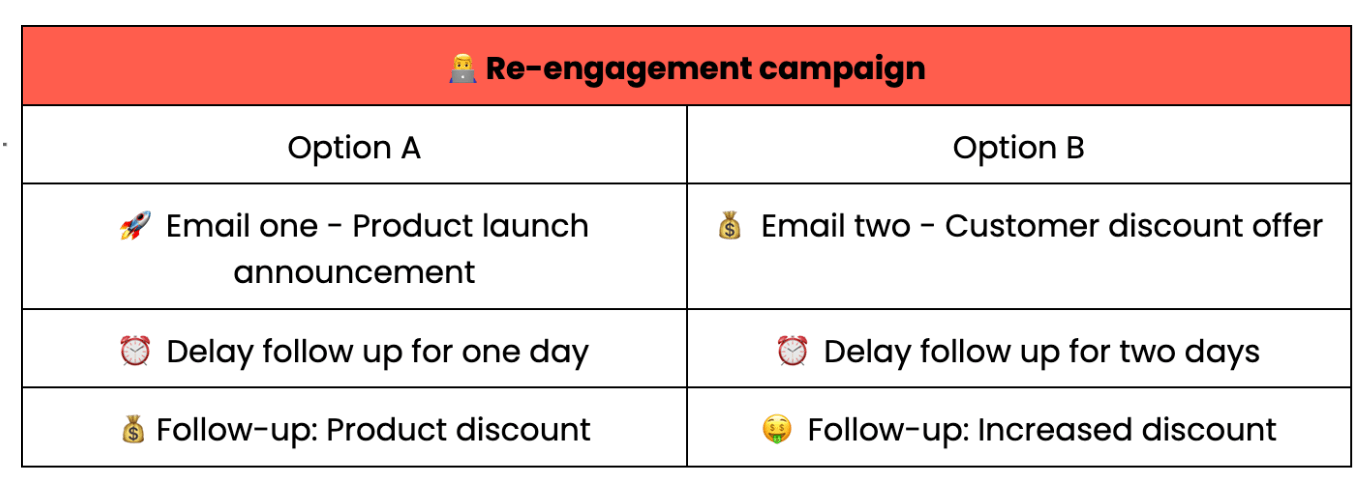
Reminders
Have you ever received an email about an upcoming appointment with your doctor, physio, or insurance provider?
In that case, you’ve experienced first-hand how marketing automation strategies can be used to remind people about an upcoming appointment or meeting - it’s something that’s used all the time.
It may be one of the most simple ways this method is used, but it’s highly efficient and can ensure your meeting is as well attended as possible.
Because let’s face it, nobody likes talking to an empty room.
Cold sales outreach
Ask any sales representative and they’ll all say the same thing: cold sales outreach is tough.
Luckily for you and your team, there’s a marketing automation strategy that’ll do the hard work for you.
Marketing nurture campaigns, drip email campaigns, and marketing automation templates are all used as a means of automating the cold sales process, making life easier for your team, and negating the tedious requirement of having to reach out to prospects manually.
Not only does setting up an automation strategy speed up the process (and helps you reach more leads), but it also frees up time for you and your reps to dedicate to prospects who’ve already converted into bona fide customers.
Let’s take a look at how a marketing automation strategy works for cold sales outreach…
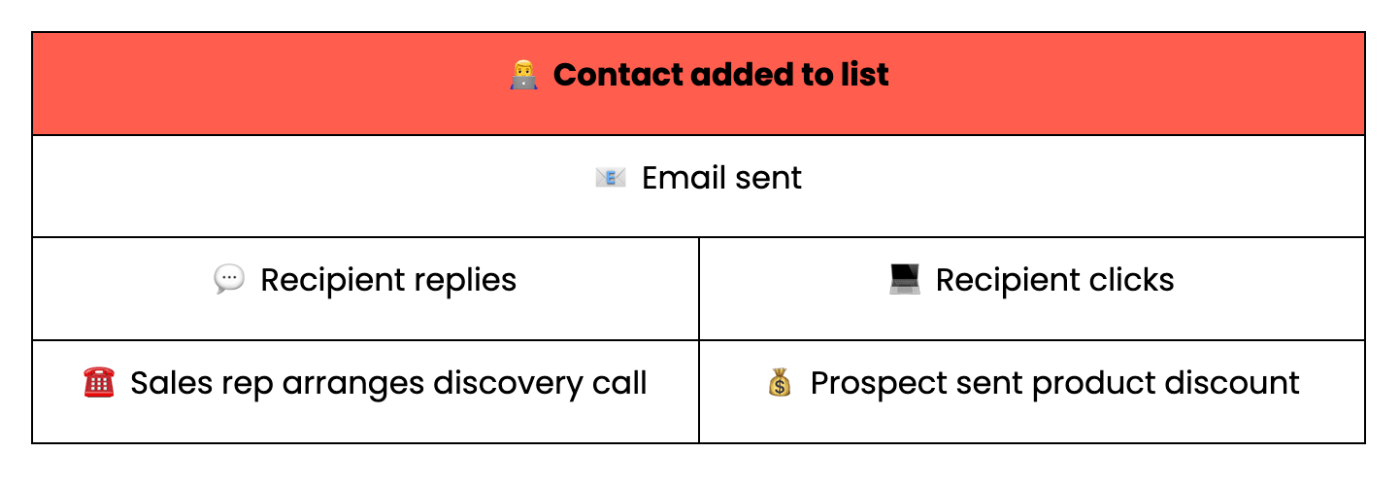
Personalization
Messaging ought to make the recipient feel valued - and there’s no better way to do that than sending a message that’s non-generic and personal.
The smallest gestures go a very long way in the world of product marketing, and setting up an automation strategy to wish a customer ‘Happy Birthday’ or ‘Happy Anniversary’ coupled with a discount won’t go unnoticed.
These communications will work wonders for your customer relationships and enhance loyalty, whilst also presenting the ideal opportunity to take advantage of cross-selling and upsell opportunities.
Diana Gabroveanu, Co-Founder & Chief Marketing Officer of Advocacy Maven gave her perspective on the role personalization plays in customer programs during her presentation at the Customer Marketing Summit:
Abandoned cart email marketing
Ever logged onto an eCommerce site, added something to your cart, and had a last-minute change of heart - only to see an email drop into your lap reminding you to finish your purchase shortly afterwards?
Welcome to the world of abandoned cart marketing automation.
This is a method commonly used by eCommerce sites *cough, Amazon* to rope you back in to complete your purchase before you look for an alternative solution.
It’s a super simple concept, that can play a crucial role in helping you improve your conversion rate and increase overall sales - here’s an example of what it looks like in practice:
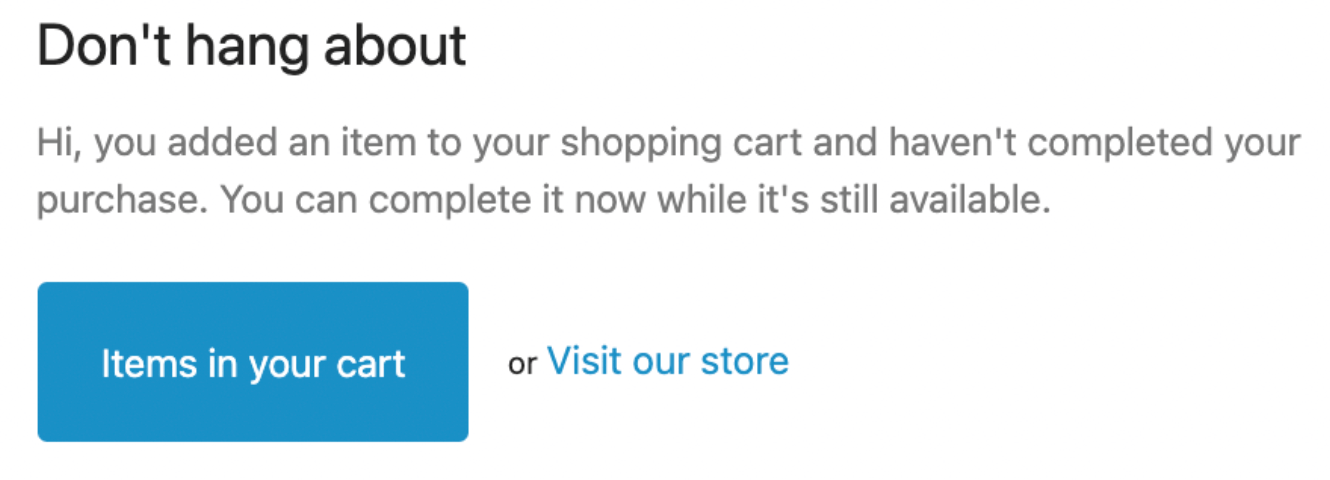
As we’ve alluded to previously, the abandoned cart automation strategy is simple, and works like this:
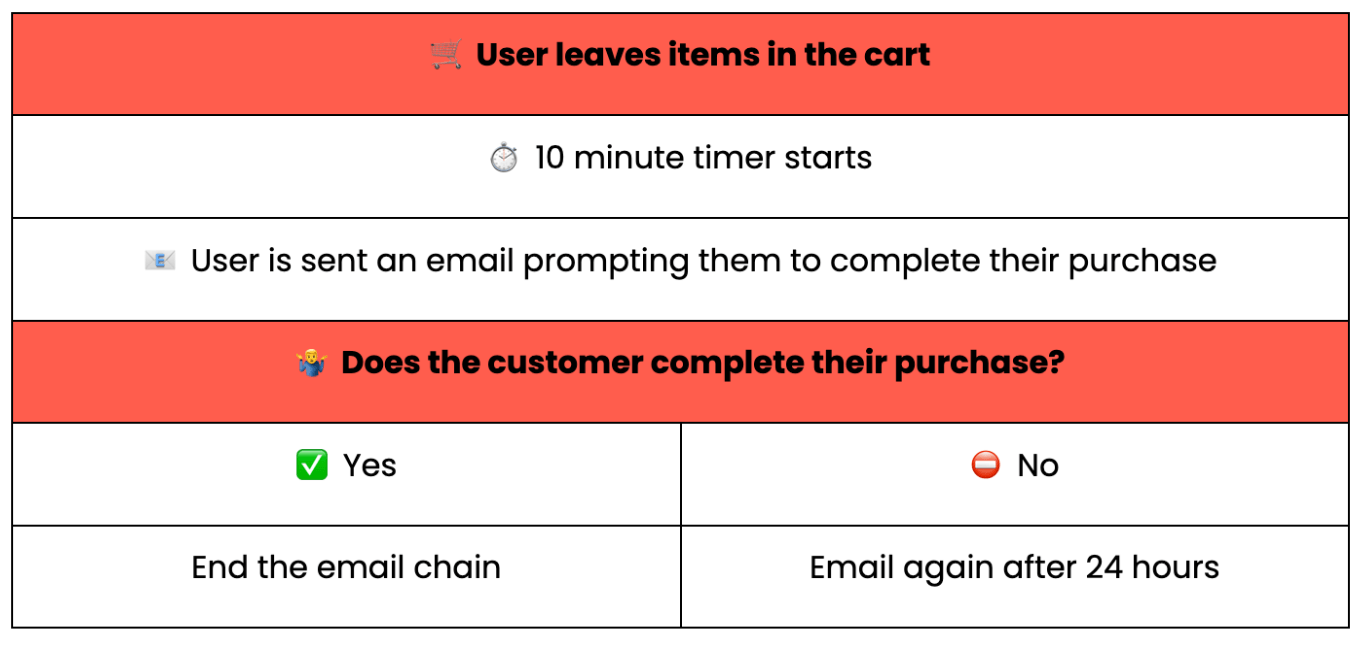
Re-engagement campaigns
Re-engagement campaigns are a fabulous way to contact customers who haven’t been interacting with your brand.
Companies use campaigns such as these to incentivize their customers, to get them back on side. Common incentives include gift cards, discounts, or free trials for products or services.
This method is often coupled with social media outreach to take this to the next level to enhance the likelihood of a successful campaign. After all, re-activating churned customers is much harder than attracting new customers.
Transactional messaging
Transactional messaging is a form of automated emails sent to a data set comprised of customers who’ve completed an intended action.
For example, if a customer buys a product, an onboarding message may then be sent to the customer explaining how to get the most out of the product’s features.
Again, this is an automated process that benefits greatly from the incorporation of personalized messages.
We’ll say it until we’re blue in the face: personalization is a key ingredient in securing customer satisfaction!
NPS surveys
As a product marketer, you need to conduct customer and market research - it’s a must. It allows you to see what’s working well, what isn’t quite hitting the mark, and how you can improve your products and services to ensure the customer is satisfied without fail.
NPS (net promoter score) is a metric used by companies during the market research process in which they ask their sample whether they’d be likely to recommend their company, product, or service to a family member or friend, or whether they’d use it again.
The automated nature of this survey makes the process of gathering reviews and feedback effortless, allowing you to garner a large batch of responses before the analysis process.
The findings can be worth their weight in gold, so don’t skimp on the details.
Wrap up
Like all things worth having, marketing automation isn’t a piece of cake - it requires hard work and you need to set the time, effort, and investment aside to make sure you’re ticking the right boxes.
However, if you put the effort into the process, we guarantee you and your team will reap the rewards, and the fruit of your labor will be more than worth it.


 Follow us on LinkedIn
Follow us on LinkedIn
